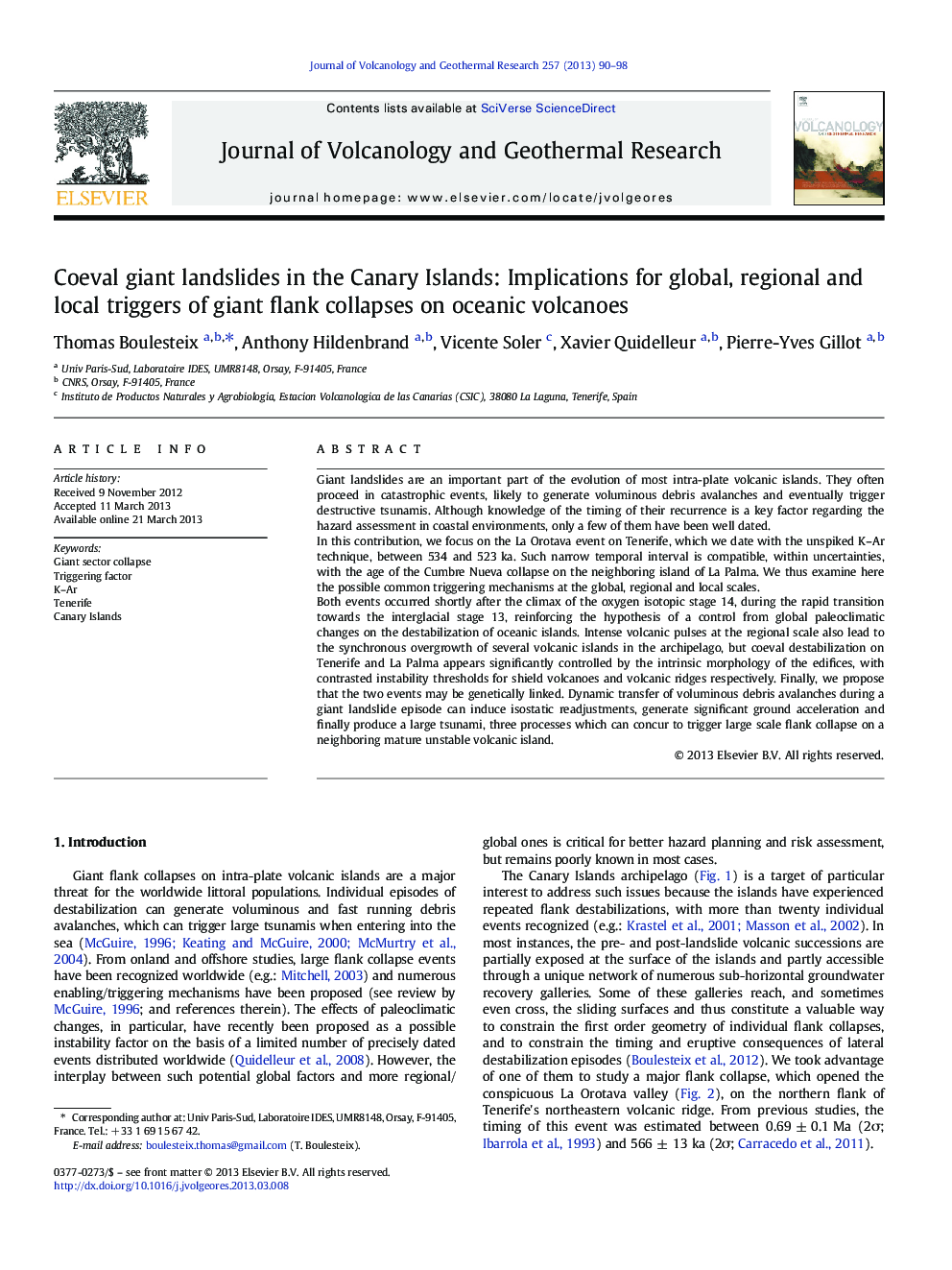| Article ID | Journal | Published Year | Pages | File Type |
|---|---|---|---|---|
| 4714828 | Journal of Volcanology and Geothermal Research | 2013 | 9 Pages |
•We reliably reevaluated the age of La Orotava flank collapse between 534 and 523 ka.•This narrow interval is coeval with the age of the Cumbre Nueva landslide in La Palma.•We examine possible common triggering factors at the global, regional and local scales.•Construction phases control the morpho-structural maturity of edifices to collapse.•Global and regional factors are likely to accelerate/trigger the instability process.
Giant landslides are an important part of the evolution of most intra-plate volcanic islands. They often proceed in catastrophic events, likely to generate voluminous debris avalanches and eventually trigger destructive tsunamis. Although knowledge of the timing of their recurrence is a key factor regarding the hazard assessment in coastal environments, only a few of them have been well dated.In this contribution, we focus on the La Orotava event on Tenerife, which we date with the unspiked K–Ar technique, between 534 and 523 ka. Such narrow temporal interval is compatible, within uncertainties, with the age of the Cumbre Nueva collapse on the neighboring island of La Palma. We thus examine here the possible common triggering mechanisms at the global, regional and local scales.Both events occurred shortly after the climax of the oxygen isotopic stage 14, during the rapid transition towards the interglacial stage 13, reinforcing the hypothesis of a control from global paleoclimatic changes on the destabilization of oceanic islands. Intense volcanic pulses at the regional scale also lead to the synchronous overgrowth of several volcanic islands in the archipelago, but coeval destabilization on Tenerife and La Palma appears significantly controlled by the intrinsic morphology of the edifices, with contrasted instability thresholds for shield volcanoes and volcanic ridges respectively. Finally, we propose that the two events may be genetically linked. Dynamic transfer of voluminous debris avalanches during a giant landslide episode can induce isostatic readjustments, generate significant ground acceleration and finally produce a large tsunami, three processes which can concur to trigger large scale flank collapse on a neighboring mature unstable volcanic island.
